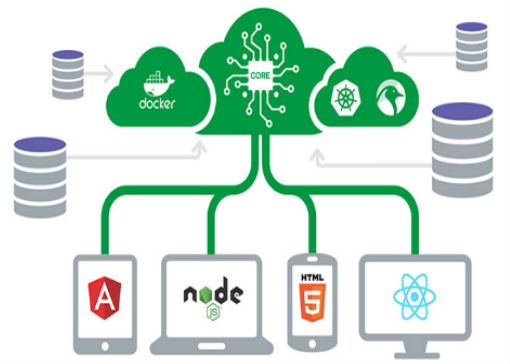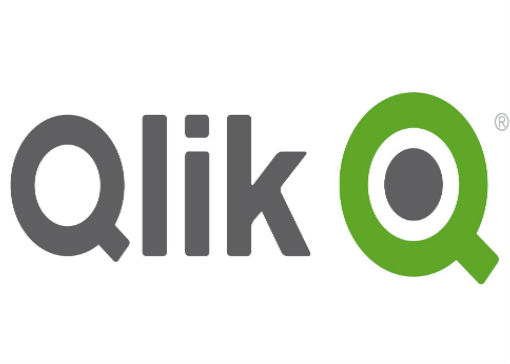In the era of big data and industry-changing dynamics, business intelligence and analytics (BI&A) has emerged as a key enabler to sustain organization performance through improvement on business decision-making. The challenge now is on how businesses can tap into the right business intelligence and analytics platform that can enable them to collect and analyze mountains of data (both structured and unstructured) to unlock its full value and gain a competitive advantage.
Recognizing the power of business intelligence and analytics, Qlik, the global leader in the visual analytics market, has come up with a modern and innovative approach to visualize and explore information and generate actionable insights for sounder, more evidence-based business decisions.
SourceForge recently caught up with James Fisher, Qlik’s Senior Vice President of Strategic Marketing, to discuss the value of data analytics for developers and businesses and offer some insights into the future of business intelligence. Fisher also sheds light on how today’s organizations can address big data and IoT challenges and shares how Qlik Core empowers developers by helping them create new data-driven applications through powerful analytics.
Q: We’ve learned about the key features and capabilities of Qlik’s platform in our previous interview. So what’s new for Qlik? Are there any new solutions or product developments you’re particularly excited to share with our readership?

James Fisher, the Senior Vice President of Strategic Marketing at Qlik
A: We continue to deliver innovations in many areas such as multi-cloud, enterprise data management, and augmented intelligence. One of the most exciting areas for us is augmented intelligence, which in simple terms is the application of artificial intelligence to BI, and which we embed into our platform in many ways including what we call Insight Advisor. First introduced in our June 2018 release, Insight Advisor suggests the best analytics and insights for users to consider and explore further. This capability is powered by our cognitive engine and works with our Qlik Associative Engine to provide insight suggestions and automation that take into context the user’s initial data and natural language search inputs. The automated aspect helps guide users to the next insight in a natural way, extending their use of the data for new discoveries.
We’ve also expanded customers’ ability to work with data sources of immense size with the introduction of the Qlik Associative Big Data Index. This is a full associative experience for the biggest data sources any customer may have. Rather than needing to bring all the relevant data to Qlik, the Associative Big Data Index brings Qlik to the data. It’s a governed, high-performance associative engine that can be deployed within sources such as Hadoop based data lakes, eliminating the need to transfer and prepare the data elsewhere before it can be analyzed. The Associative Big Data Index is a proper incremental index, optimized for associative queries from the UI all the way down to the data. And its highly scalable, as it can be distributed to work across a cluster, both in a cloud or an on-premise environment.
Q: Qlik recently expanded the developer analytics canvas with the availability of Qlik Core, which delivers the Qlik Associative Engine. Can you tell us more about this solution?
A: Developers are designing analytics offerings for the most cutting-edge IoT and big data applications, and Qlik wants to help these most imaginative efforts come to life. Qlik Core grew out of our commitment to help developers take on any business need they can imagine more easily through analytics in all its forms. With Qlik Core, developers can build new classes of data-driven applications leveraging the Qlik Associative Engine. Qlik Core delivers the Qlik Associative Engine through a developer-focused model purpose-built for the cloud, leveraging Linux and a containerized approach for the engine, along with supporting open APIs and open source libraries for integration into non-dashboard projects. Developers can try Qlik Core for free via our developer community, GitHub, and Docker.
Q: Built on the Qlik Associative Engine and Qlik-authored open source libraries, how does Qlik Core enable developers to create new data-driven applications by leveraging powerful analytics?
A: Since it’s an open platform, build for the cloud and with a containerized approach, Qlik Core is very adaptable to any environment or application. This lets developers quickly and easily embed analytics at the network edge or within any analytic workflow along with a process. The possibilities with this approach are truly endless, opening the ability to add analytics to anything where a developer can imagine data being generated, be it in physical manufacturing elements, IoT devices, logistical supply chain touchpoints, or financial transaction points.
Q: Tell us more about Qlik Core. What are its key features and capabilities? What makes it stand out from other analytics solutions in the market?
 A: Qlik Core is truly different in two key areas: the way it was designed to be truly open, and that it has as its heart Qlik’s patented associative engine, which allows developers to deploy or embed analytics with real scale and engage with any type of data source. We’ve built into Qlik Core several aspects that bring value to developers, including:
A: Qlik Core is truly different in two key areas: the way it was designed to be truly open, and that it has as its heart Qlik’s patented associative engine, which allows developers to deploy or embed analytics with real scale and engage with any type of data source. We’ve built into Qlik Core several aspects that bring value to developers, including:
- A complete set of APIs allowing integration into a wide range of applications to drive visualization, decision making, process flow, alerting, search, and other actions;
- Open source libraries such as halyard.js for data loading, enigma.js for interacting with the Associative Engine, and picasso.js for incorporating Qlik’s open source data visualization framework operational support system, as well as a library to link with external systems;
- Flexibility to easily integrate with existing application architecture elements including security, deployment, provisioning, and management;
- Built-in support for Amazon Web Services (AWS), Microsoft Azure and Google Cloud Platform (GCP) through Docker containers; and
- The ability to be managed with Kubernetes for implementing, scaling, and managing containerized applications.
Q: How has analytics changed today’s modern businesses? What role does analytics play in the future of big data and IoT?
A: Every business that is trying to compete and win needs intelligence – about their customers, suppliers, products, partners, and markets. The challenge has always been the same – how can businesses analyze data to make discoveries that lead to a competitive edge? Along the way, each generation of BI has come a little closer to fulfilling the promise. It wasn’t until now, with the third generation of BI which we are entering, that we have the potential to spread the power of analytics to every business user in the enterprise – and finally unlock all the value in data.
Organizations of all sizes and types are trying to take advantage of digital technology to reinvent the way they do business. But while digitization is erasing boundaries between businesses and their suppliers, partners, and customers, it’s the application of this 3rd generation of BI that will streamline and enhance these relationships. In 3rd gen BI, you make all the available data accessible to your workforce – and give everyone the power to explore it. This increases a company’s potential more than ever to anticipate and meet customer needs, identify and capitalize on new opportunities, and transform how things are done.
Many times, IoT and big data sources live in the cloud or disparate locations and are storing/generating massive (and growing) data volumes. Having these data sources analytics-ready is a significant challenge for organizations since they weren’t necessarily stored or created with analytics in mind. Filling this gap – how to access, organize and make sense and value of historical and real-time data – was the motivator behind creating the Associative Big Data Index and Qlik Core, and the driver behind our recent acquisition of Podium Data, which we have recently rebranded as Qlik Data Catalyst. All these efforts will enable companies to extend the ability and value of analytics throughout their entire organization, including their big data and IoT initiatives. For example, IoT devices have long been a source of data for analytics. Increasingly they will become a consumer of data as the edge device itself will run analytics, and Qlik Core is built specifically to help embed the analytics engine in these devices.
Q: As a leading provider of analytics development platform, what advice can you give to businesses wanting to employ analytics solution to optimize their business performance? What steps or measures do they need to make the most of their business analytics tool?
A: There are three key areas where organizations need to focus to maximize the value of analytics. One we discussed heavily earlier with embedded analytics and how our platform, including Qlik Core, addresses this. The other two areas are an end-to-end data strategy approach and data literacy. As you would expect, Qlik has made significant investments in each as we see customers’ needs for real-world solutions in these areas continually growing.
- End-to-End Data Strategy. Enterprise data strategies have evolved to rely heavily on the creation of data lakes, however customers are realizing that these and other data sources aren’t designed to easily and quickly deliver data to the business user. In many instances, data lakes have only increased customer data complexity and management headaches. According to Gartner Inc., “Through 2018, 90% of deployed data lakes will be rendered useless, as they’re overwhelmed with information assets captured for uncertain use cases.”
Qlik believes an organization’s analytics strategy is only optimized when paired with a strong data strategy. Many customers lack an understanding of even what data they already have, and are left struggling to maximize their data’s value. Qlik’s multi-cloud capabilities and Associative Big Data Index are designed to help customers tap into all their data, explore massive data volumes in any direction and discover new insights. With Qlik Data Catalyst, Qlik will provide customers with an expanding enterprise data management solution to transform their raw data into a governed, analytics-aware information resource and a path to an end-to-end data strategy to analytics approach.
- Data Literacy. As organizations make more data available to users, it’s vital that those users are equipped to read, analyze and utilize data for decisions, communicate with data throughout the organization, and use that data knowledge in decision making throughout the organization. Qlik recently executed the first ever global Data Literacy Index survey to understand the real-world opportunity to companies through data literacy. The survey showed organizations that rank in the top third of the Data Literacy Index have a 3-5% higher enterprise value, equating to $300-500 million dollars in value. The survey also showed the majority (92%) of businesses decisions makers believe it is important for employees to be data literate, but just 24% of the global workforce reports being fully confident in their ability to read, work with, analyze and communicate with data. This gap is going to create a significant challenge for organizations, and those that will win in the data economy will be the ones that enable data literacy across all their employees.
Q: What are some big data and IoT challenges that development teams are facing today? And how can Qlik help developers meet these challenges?
A: Developers are at the forefront in tackling big data and IoT challenges with innovative analytics offerings. What they lack in many instances is the ability to easily embed enterprise-grade analytics tools at the edge where data lives. It’s the core problem Qlik Core is designed to solve – putting real-world tools and services in developers’ hands to truly enable them to create new data-driven applications on a proven analytics platform.
The other area developers need help is in validating their creations and making sure they are enterprise ready. Qlik helps developers in two ways on this front. The first is through our 30,000+ developer community Qlik Branch, a forum where developers across the globe share and collaborate on open source projects and ignite innovation. These members have access to Qlik Playground, a free programming environment where they can learn about, use and experiment with Qlik’s Associative Engine and APIs. By accessing public data sets (including their own GitHub data), they can create cool data-driven apps using powerful search, data retrieval without writing queries, charts with a single line of code and more.
The second is our Trusted Extension Developer (TED) Program, which enables developers to more easily create and deliver innovative visual extensions into commercial production environments. There is a wide range of developer-driven open source extensions already living within Qlik Branch, and enterprise customers and technology partners are eager to leverage this innovation to expand the value of Qlik Sense. Qlik’s TED Program helps developers transform those existing and future extensions to enterprise readiness.
Q: Faced with the challenges of using big data to innovate and grow their businesses, today’s enterprises are moving toward open source-based analytics tools. As an advocate of the open source model, why should enterprises go for an open source solution? Can you tell us some benefits or advantages of open source technology in analytics?
 A: Leveraging open source lets organizations benefit from a range of innovation that would otherwise be unavailable to them based on their own staff’s expertise and bandwidth. There are so many interesting things happening with extensions that can tie into an open analytics platform such as Qlik’s that enhance the value and capabilities of analytics.
A: Leveraging open source lets organizations benefit from a range of innovation that would otherwise be unavailable to them based on their own staff’s expertise and bandwidth. There are so many interesting things happening with extensions that can tie into an open analytics platform such as Qlik’s that enhance the value and capabilities of analytics.
No one company can develop all the innovations that could potentially bring more value to analytics, and many of those by design leverage open source approaches – think areas like natural language processing, cognitive search, machine learning or bots. This is where Qlik’s robust partner ecosystem comes into play, which includes leading companies like Narrative Sciences and Big Squid alongside newer players like CrunchBot AI.
This is also a huge benefit of our TED program. Through TED developers can earn accreditation for their extensions (many based on open source) against a Qlik authored set of requirements for quality, support, security, and maintenance. Customers now have expanded access to developer expertise and can use these extensions with confidence, knowing they have been vetted by Qlik, and that the extension author has signed up to meet ongoing support and quality metrics laid out by Qlik.
Q: Share with us your predictions for the big data analytics market. What emerging trends and technologies do you think are bound to shape or impact the analytics industry in the coming years?
A: I mentioned a few of these trends in our last conversation, but I think they are worth repeating. Per my earlier comment, we are entering the 3rd generation of BI and analytics where data will be democratized for every user, and analytics will be embedded in all devices and processes. With this comes three main trends:
- Enterprises will embrace the need to start with a data strategy that’s analytics-ready. This means having an end-to-end enterprise data management and analytics strategy that takes data from raw to ready to insights, which includes a governed enterprise data schema accessible via catalogs.
- Executive leaders such as CDOs and CIOs, alongside their business users, will embrace the need to boost data literacy – both through education and Augmented Intelligence on steroids.
- Analytics will be embedded throughout the organization, from the edge to the point-of-decision. Leading analytics platforms will enable real-time data and insights to be embedded in apps, processes, devices, and anywhere data can be leveraged for an advantage.
About Qlik
Qlik is a global leader in the visual analytics market, offering smart and cutting-edge solutions for self-service data visualization, guided analytics applications, embedded analytics, reporting, and more. Established in Lund, Sweden in 1993, and currently headquartered in King of Prussia, PA, Qlik supports organizations of all sizes by enabling every user to see the whole story that lives within their data. Qlik provides three core solutions: QlikView, a proven guided analytics and dashboarding solution; Qlik Cloud, a growing portfolio of SaaS apps; and Qlik Sense, the next-generation visual analytics platform.
